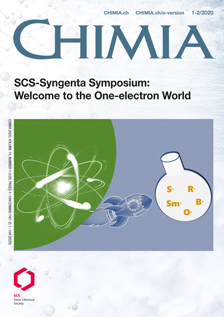Integrating Catalytic Processes and Modern Electrolyte Concepts into Electrosynthesis
DOI:
https://doi.org/10.2533/chimia.2020.49PMID:
32200786Keywords:
Electrocatalysis, Electrosynthesis, Hypervalent iodine, Molecular rearrangement, PolyelectrolyteAbstract
Electrosynthesis is frequently presented as an intrinsically sustainable, safe and efficient method. While this is indeed often the case, this assessment cannot be easily generalized, as a number of challenges need to be addressed on the way to more efficient and truly sustainable processes. These challenges comprise the necessity for employing large amounts of supporting electrolyte additives along with the concomitant separation and waste issues. A further problem is the kinetic inhibition of the heterogeneous electron exchange, which in many instances leads to a decreased selectivity and an increased energy consumption ( 'overpotential' ). Another challenge is the apparent restriction of electrosynthesis to redox reactions, which seems to exclude important redox-neutral processes such as rearrangements, cycloadditions and substitutions from the scope of applications. Herein, catalytic approaches and electrolyte concepts are presented, which can help to overcome the abovementioned issues. For illustration of the principles, examples from our recent research activities are used.Downloads
Published
2020-02-26
Issue
Section
Scientific Articles
License
Copyright (c) 2020 Robert Francke

This work is licensed under a Creative Commons Attribution-NonCommercial 4.0 International License.
How to Cite
[1]
Chimia 2020, 74, 49, DOI: 10.2533/chimia.2020.49.







